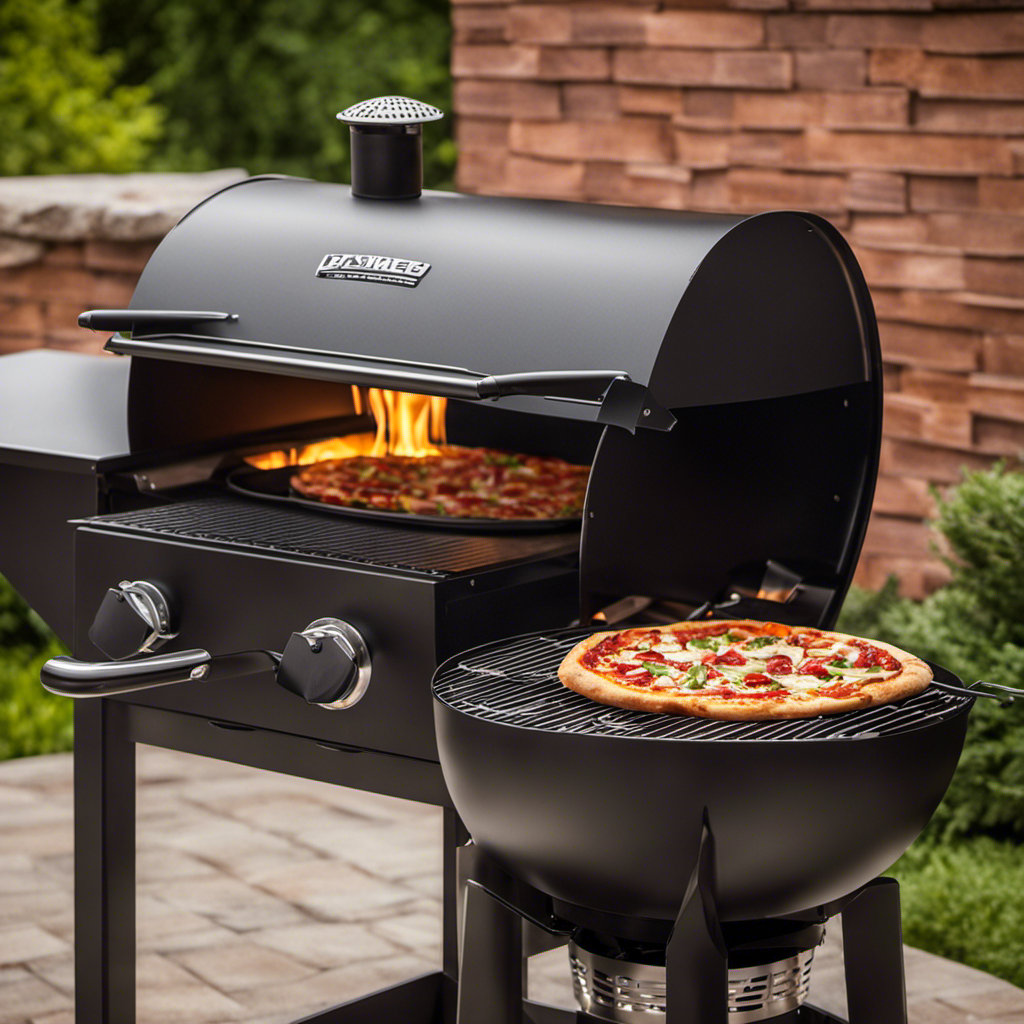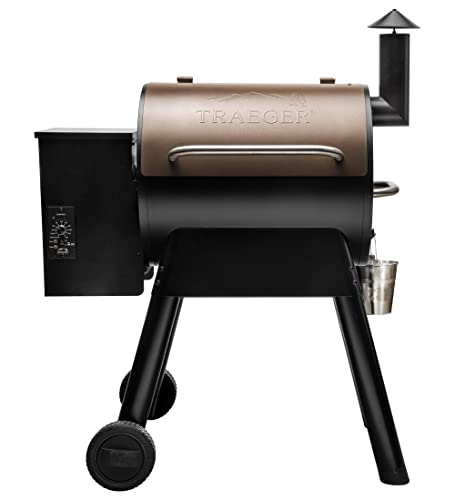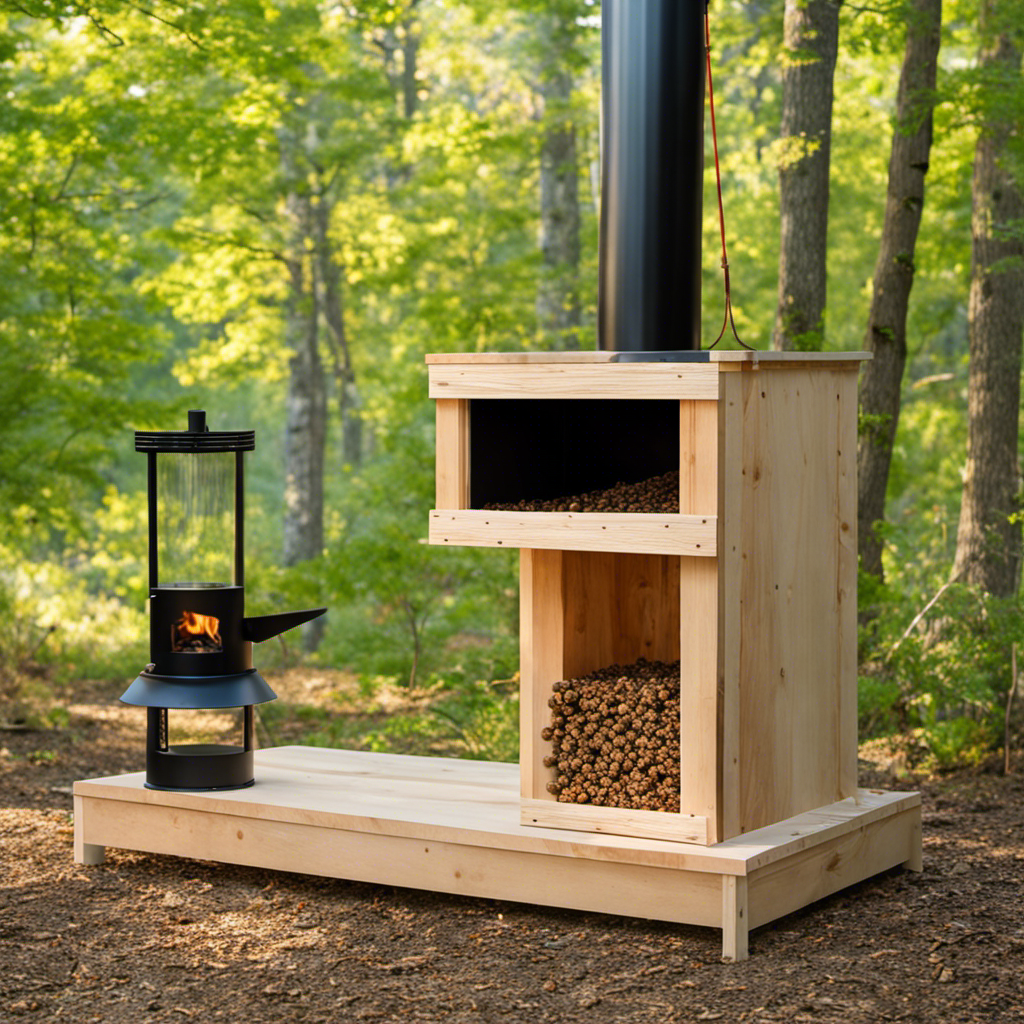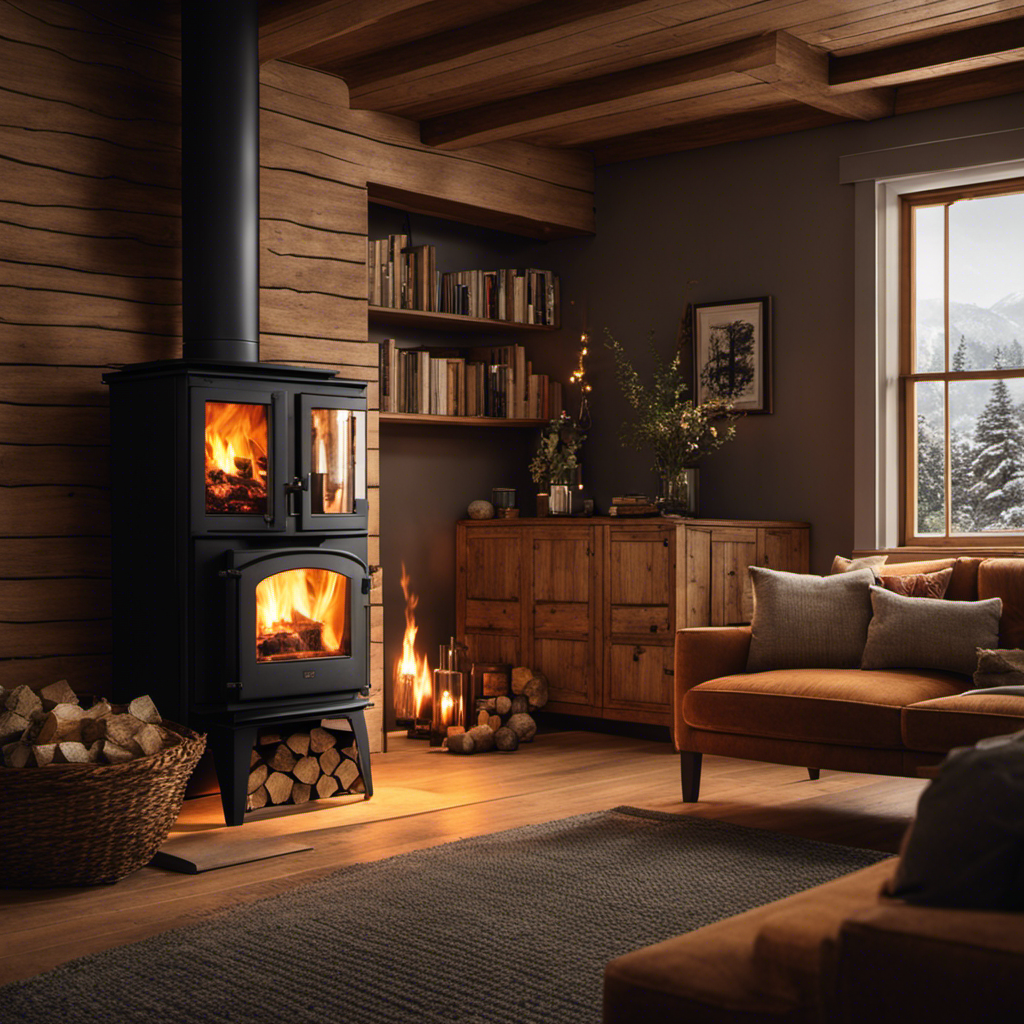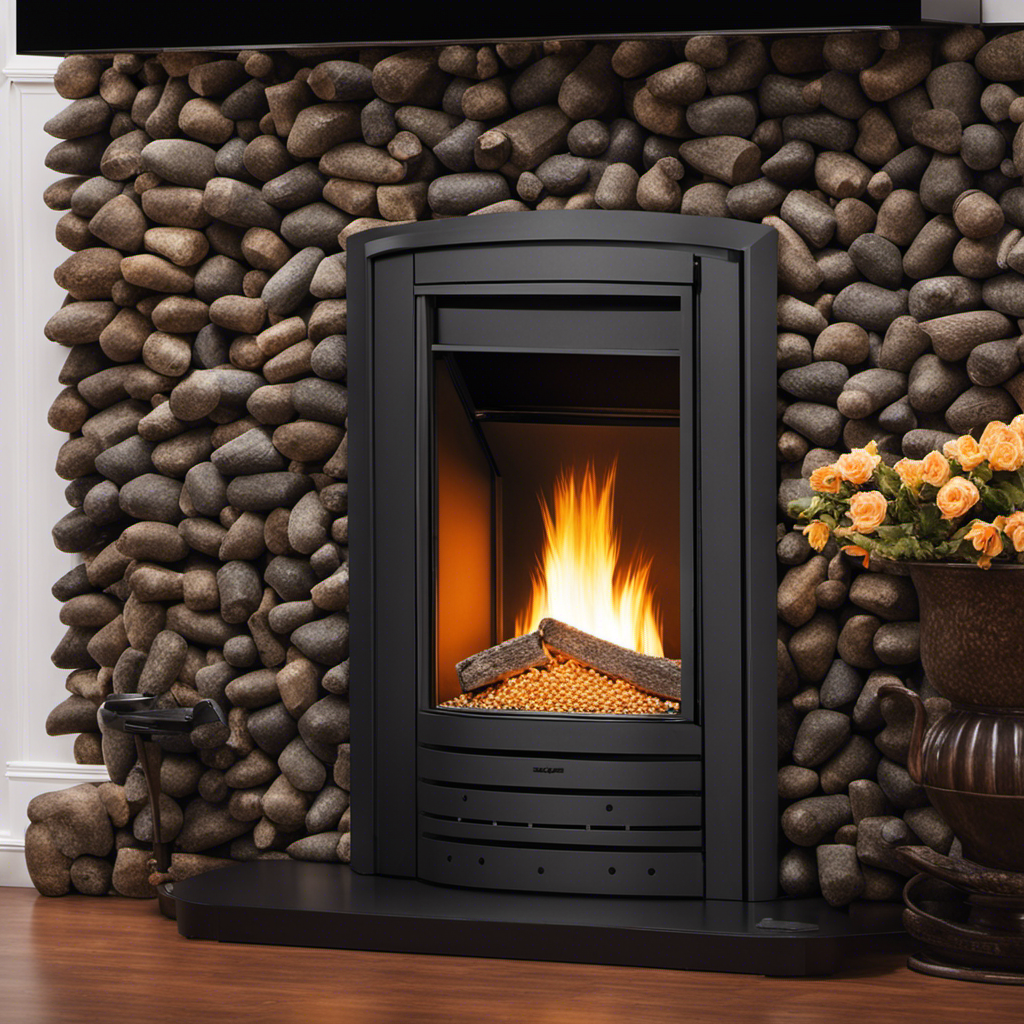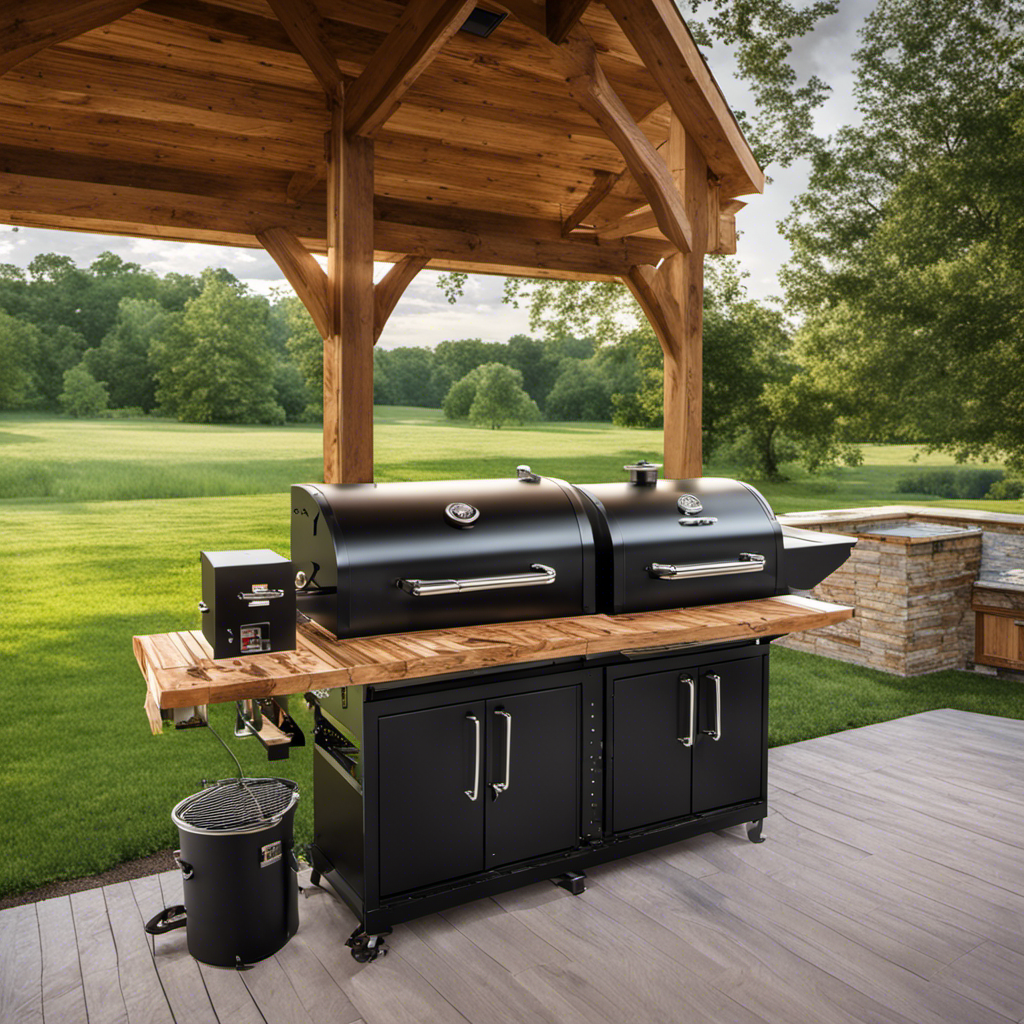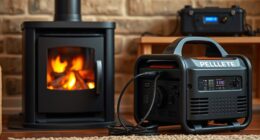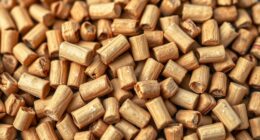Hello! Have you ever been curious about the duration your grill can operate on wood pellets? Get ready to discover the mysteries surrounding pellet consumption.
In this article, I’ll dive into the factors that affect how quickly those pellets disappear, share tips and tricks to extend their lifespan, and even reveal the best brands for longer cooks.
So, whether you’re a grill master or just getting started, get ready to learn the truth about wood pellet grills and how to make those pellets last.
Let’s get smokin’!
Key Takeaways
- Pellet consumption rates are influenced by factors such as grill size, cooking area, temperature settings, and cooking time.
- Proper storage of pellets in dry, cool, and airtight containers can extend their lifespan.
- Pellet quality, moisture content, and density impact ignition and overall efficiency.
- Choosing high-quality pellets from recommended brands can optimize efficiency and prolong burn time.
Factors Affecting Pellet Consumption
There are several factors that can affect how long the pellets last in a wood pellet grill.
One important factor is the pellet consumption during cold weather. When it’s cold outside, the grill needs to work harder to maintain the desired temperature, which means it will use more pellets. This is because the pellets burn faster in colder temperatures in order to generate more heat.
Another factor that can impact pellet usage is the size of the grill. Larger grills generally require more pellets to maintain the desired temperature because they have more space to heat up. The size of the cooking area and the overall capacity of the grill can also influence how long the pellets last.
With these factors in mind, let’s now explore the pellet consumption rates for different grills.
Pellet Consumption Rates for Different Grills
Different grills consume pellets at varying rates, which can be influenced by factors such as pellet quality and the type of grill being used. The quality of the pellets is crucial in determining how long they will last. High-quality wood pellets are typically denser and have lower moisture content, resulting in longer burn times.
Additionally, wood pellets offer several benefits over charcoal, including consistent heat distribution, less ash production, and a cleaner, more flavorful cooking experience.
Understanding the consumption rates of different grills is essential for planning and optimizing pellet usage. By calculating pellet consumption based on grill specifications, cooking time, and temperature settings, you can ensure that you never run out of pellets in the middle of a cook.
How to Calculate Pellet Usage
To calculate how many pellets you’ll need, factor in the specific grill you’re using, the cooking time, and the temperature settings.
Calculating pellet usage is essential for optimizing pellet efficiency and ensuring a successful grilling experience.
Different grills have varying pellet consumption rates, so it’s important to consider your specific grill model.
Additionally, the cooking time plays a crucial role in determining the amount of pellets required. Longer cooking times will naturally require more pellets.
The temperature settings also affect pellet usage, as higher temperatures will burn through pellets more quickly.
By taking all these factors into account, you can accurately estimate the amount of pellets needed for your grilling session.
Now, let’s explore some tips for extending pellet lifespan and getting the most out of your wood pellet grill.
Tips for Extending Pellet Lifespan
Maximize the lifespan of your pellets by carefully monitoring the temperature and adjusting it accordingly throughout your grilling session.
Extending pellet storage and preserving them for future use requires some best practices. First, make sure to store your pellets in a dry, cool place to prevent moisture absorption. Moisture can cause the pellets to break down and become unusable. Additionally, it’s important to keep the pellets in airtight containers or bags to prevent them from being exposed to oxygen, which can lead to oxidation and degradation.
When using your wood pellet grill, start with a lower temperature and gradually increase it to avoid burning through the pellets too quickly. By maintaining a consistent temperature and being mindful of pellet storage, you can enjoy longer pellet lifespan and more enjoyable grilling experiences.
Now, let’s take a look at pellet consumption for different cooking temperatures and how it can impact the duration of your grilling session.
Pellet Consumption for Different Cooking Temperatures
When grilling at higher temperatures, you’ll notice a faster rate of pellet consumption. The intense heat requires more fuel to maintain the desired cooking temperature.
Here are a few things to keep in mind about pellet consumption:
-
Cooking time: Higher temperatures mean shorter cooking times as the food cooks faster. This can lead to an increased pellet consumption rate since the grill is in use for a shorter period.
-
Pellet flavor: Grilling at higher temperatures can result in a more intense smoky flavor, as the pellets burn hotter and impart a stronger taste to the food.
Understanding these factors is crucial for optimizing pellet usage and achieving the desired results.
Now, let’s delve further into understanding pellet efficiency and maximizing the lifespan of your pellets without compromising on flavor.
Understanding Pellet Efficiency
Understanding how efficient your grill is at using pellets can help you make informed decisions about cooking times and temperatures. There are several factors that can affect pellet ignition and overall efficiency.
One important factor is the quality of the pellets themselves. Pellets with a higher moisture content or lower density may have difficulty igniting and burning consistently.
Another factor to consider is the size of the pellets. Smaller pellets tend to burn more quickly, while larger pellets may take longer to ignite but can provide a longer-lasting heat source. Finding the right balance in pellet size can optimize both ignition and efficiency.
By understanding these factors, you can choose the best pellets for your grill and ensure longer lasting cooks.
Now let’s dive into some recommended pellet brands that can help you achieve just that.
Recommended Pellet Brands for Longer Lasting Cooks
To achieve longer lasting cooks, you should consider trying out some of these recommended pellet brands. When it comes to wood pellet grills, the type of pellets you use can greatly impact the lifespan of your cook. Here are some top brands that I highly recommend:
-
Traeger Pellets: Known for their high-quality wood blends, Traeger pellets offer consistent heat and flavor throughout the cook.
-
BBQr’s Delight: These pellets are made from pure hardwood and come in a variety of flavors, perfect for adding that extra smoky taste to your dishes.
By using these recommended pellet brands, you can extend the lifespan of your pellets and enjoy more hours of cooking time.
Now, let’s move on to the next section where we’ll discuss pellet consumption for various types of meat.
Pellet Consumption for Various Types of Meat
When it comes to pellet consumption on a wood pellet grill, the smoking duration and the type of meat being cooked play a significant role. Different meats require varying smoking times to achieve the desired tenderness and flavor. To give you a better understanding, here is a table showcasing the smoking duration and recommended pellet flavors for various types of meat:
| Meat Type | Smoking Duration | Recommended Pellet Flavors |
|---|---|---|
| Chicken | 1-2 hours | Apple, Cherry |
| Pork | 4-6 hours | Hickory, Maple |
| Beef | 6-8 hours | Mesquite, Oak |
| Fish | 1-2 hours | Alder, Pecan |
As you can see, the smoking duration varies based on the meat, with beef requiring the longest time for a rich smoky flavor. Additionally, the recommended pellet flavors enhance the taste of each meat. Now that you know how long to smoke different meats, let’s move on to the next section about how to store pellets for maximum shelf life.
How to Store Pellets for Maximum Shelf Life
If you want to ensure the maximum shelf life of your pellets, make sure to store them in a cool and dry place. Storing pellets in humid climates can lead to moisture absorption, which can affect their quality and burn efficiency. Here are three tips for proper pellet storage:
-
Use airtight containers: Invest in high-quality containers that can seal out moisture and keep the pellets fresh. Plastic bins or metal containers with tight-fitting lids are great options.
-
Avoid direct contact with the ground: Placing pellets directly on the ground can expose them to moisture, especially in humid climates. Use pallets, shelves, or racks to keep the pellets elevated and away from any potential water sources.
-
Consider silica gel packs: To further protect against moisture, you can place silica gel packs inside the storage containers. These packs absorb excess humidity, helping to maintain the quality of your pellets.
By following these storage practices, you can extend the shelf life of your pellets and ensure optimal performance when it’s time to fire up your wood pellet grill.
Transition: Now that we’ve discussed how to store pellets for maximum shelf life, let’s dive into the myth vs. reality of pellet consumption.
Pellet Consumption: Myth Vs. Reality
When it comes to pellet consumption, understanding the burn rate and fuel efficiency is crucial.
Pellet burn rate refers to the amount of pellets burned in a given time period, while fuel efficiency measures how effectively the pellets are converted into heat.
These two factors play a significant role in determining the overall cost and performance of a pellet grill, making it essential to delve into the myth versus reality surrounding pellet consumption.
Pellet Burn Rate
To determine how long the pellets last, you’ll need to consider the pellet burn rate. The burn rate is influenced by several factors, including temperature, airflow, and the type of wood used.
For smoking, the pellets burn at a slower rate, as lower temperatures are required for the desired smoky flavor. On the other hand, grilling requires higher temperatures, resulting in a faster burn rate.
Additionally, the size and quality of the pellets can affect the burn rate. Using smaller pellets or ones with higher moisture content may cause them to burn more quickly.
It’s important to note that pellet consumption for smoking will be lower compared to grilling, due to the difference in required temperatures.
Now, let’s delve into the next section to explore the fuel efficiency of wood pellet grills.
Fuel Efficiency
To improve the fuel efficiency of your grill, consider adjusting the temperature settings and optimizing the airflow. These simple steps can make a significant difference in how long your fuel lasts and how evenly your food cooks.
Here are three tips to help you maximize your grill’s fuel efficiency:
-
Maintain your grill: Regular grill maintenance is essential for optimal performance. Clean the grates and remove any built-up grease or debris that can obstruct airflow. This will ensure that your grill operates at its highest efficiency.
-
Use alternative fuel options: Consider using alternative fuel sources such as natural gas or propane, which burn cleaner and more efficiently compared to traditional charcoal or wood. These options not only reduce fuel consumption but also decrease the amount of smoke and ash produced.
-
Control the airflow: Adjusting the airflow vents on your grill can help regulate the temperature and prevent unnecessary fuel consumption. By opening the vents slightly, you can maintain a steady heat while using less fuel.
Frequently Asked Questions
Are All Wood Pellet Grills the Same When It Comes to Pellet Consumption Rates?
When it comes to comparing pellet consumption rates, not all wood pellet grills are the same. Calculating pellet consumption rates can vary depending on the grill’s design, temperature settings, and cooking duration.
How Can I Calculate the Exact Amount of Pellets I Will Need for a Specific Cooking Session?
To calculate pellet usage for a specific cooking session, I consider factors like temperature, cooking time, and grill size. By crunching the numbers, I can estimate the exact amount of pellets needed. It’s all about precision and efficiency.
Are There Any Specific Tips or Tricks to Make My Pellets Last Longer?
To make your pellets last longer, here are some tips and tricks: preheat your grill, clean the ash regularly, use the appropriate temperature setting, and avoid unnecessary opening of the grill lid.
Can the Type of Meat Being Cooked Affect the Amount of Pellets Consumed?
When it comes to grilling, the type of meat you cook can definitely affect how quickly your pellets are consumed. Some meats require higher temperatures, which means more pellets are needed to maintain that heat.
Is There a Recommended Brand of Pellets That Will Last Longer During Cooking?
In my experience, I’ve found that using recommended brands of wood pellets can make a difference in how long they last during cooking. Different types have their pros and cons, so it’s worth exploring to find the perfect match.
Conclusion
In conclusion, after delving into the world of wood pellet grills and their pellet consumption rates, it is clear that there are various factors that can affect how long the pellets last.
From the type of grill and cooking temperature to the type of meat being cooked, every detail matters. However, by following some simple tips and tricks, such as using recommended pellet brands and properly storing the pellets, you can extend the lifespan of your pellets and enjoy longer, flavorful cooks.
So, get ready to fire up that grill and savor the delicious results!
Growing up surrounded by the vast beauty of nature, Sierra was always drawn to the call of the wild. While others sought the comfort of the familiar, she ventured out, embracing the unpredictable and finding stories in the heartbeat of nature.
At the epicenter of every remarkable venture lies a dynamic team—a fusion of diverse talents, visions, and passions. The essence of Best Small Wood Stoves is crafted and refined by such a trio: Sierra, Logan, and Terra. Their collective expertise has transformed the platform into a leading authority on small wood stoves, radiating warmth and knowledge in equal measure.


